Tesla Powerwall and Inverter Review
home > battery storage > best battery systems > Tesla Powerwall and Inverter Review
The Powerwall battery system from Tesla Energy has made a big impact in the solar world and pushed home energy storage into the mainstream. Tesla took the energy storage world by surprise with the release of the first-generation Powerwall almost 7 years ago. This unique DC-coupled battery had a much smaller 6.4kWh capacity and was the first high-voltage battery for home use. In comparison, the current Powerwall 2, first released in 2016, has over double the storage capacity and includes an integrated battery inverter-charger, giving it much more power and flexibility.
Compared to the first Powerwall, the Powerwall 2 was designed to be more compact, easier to handle and simpler to install. Gone are the sleek curves of the first Powerwall, giving way to a more practical rectangular shape with venting on either side for cooling and a bright green LED strip. Interestingly it also has a simple on/off switch on one side. Still weighing in at 120kg, it is definitely not light, although thankfully, it can now be ground-mounted as well as wall-mounted. The IP rating (weather rating) remains high at IP56, although it still should be installed in a sheltered location, such as a carport or garage, and out of direct sunlight if possible. Heat and batteries just don't go well together.
New Powerwall revealed
Following the Powerwall 2, the next iteration in the Tesla home battery series was the Powerwall+ (plus), first publicised in May 2021 and only available in the US. The Powerwall+, reviewed below, is essentially the Powerwall 2 system with an integrated solar inverter, making it the first all-in-one hybrid solar battery system from Tesla. The next-generation Powerwall 3, revealed in September 2023, is a re-designed and much more powerful version of the Powerwall+. However, it will not be officially for sale until early 2024. See the detailed Tesla Powerwall 3 review.
Powerwall 2 price changes - up and down!
The Powerwall 2 had its first price increase in late 2018, bringing it up to AU$10,000 (US$7400). Surprisingly, another two price increases occurred during 2020, lifting the price to around AU$11,000. During 2021, there were several price fluctuations, but in 2022, the price shot up dramatically with three consecutive price increases. The first modest increase of $950 was announced in March, the second in May, and the largest and most recent price hike was in October, lifting the cost of a Powerwall system above $16,000 Australian dollars. Likewise, the price increased substantially in the US to over $11,000. When first released, the Powerwall was one of the most affordable AC-coupled battery systems. However, it is now one of the more expensive on the market.
Finally, a Price drop! After years of consecutive price rises, 2023 has seen two reductions taking the price down to just under $13,000 dollars in Australia (excluding installation), a total drop of $3,330 in just 4 months.
Powerwall 2 main features and specifications
Tesla Powerwall 2
13.5kWh usable storage capacity
AC-coupled battery with integrated inverter/charger
Power rating = 5kW continuous, 7kW peak output rating #
Advanced liquid thermal management system
10-year warranty with a minimum 70% retained capacity*
Price: US$11,000 / AU$13,000 plus $1,800 backup gateway **
* Based on information available at the time of writing. **subject to change. Does not include installation, solar inverter, panels, or extras.
# Peak output rating may be increased via software update - further details below
Download the full Powerwall 2 datasheet (US) Version or the AU Version.
Powerwall+ main features and specifications
Tesla Powerwall+ (Plus)
13.5kWh usable storage capacity
Hybrid DC-coupled system with integrated Solar Inverter
7.6kW Solar Inverter with 4 MPPTs = Max solar capacity 12.9kW
On-grid power rating = 5.8kW continuous, 7.6kW peak output rating
Off-grid power rating = 7kW continuous, 10kW peak output rating
Advanced liquid thermal management system
10-year warranty with a minimum 70% retained capacity*
Price: US$12,800 - Plus optional backup gateway 2 **
Available in the US only, not available in Australia or the EU.
* Based on information available at the time of writing. ** Subject to change. Does not include installation, solar panels, or additional components.
Download the full Tesla Powerwall+ datasheet.
Tesla Lithium NMC battery cells
The Powerwall 2 uses lithium NMC (Nickel-Manganese-Cobalt) battery cells developed in collaboration with Panasonic, which are similar to the Lithium NCA cells used in the Tesla electric vehicles. The original Powerwall 1 used the smaller 18650 size cells, while the Powerwall 2, reviewed here, uses the larger 21-70 cells, which have a 21mm diameter and are 70mm long. The larger cells have several advantages, including a greater energy density and a longer runtime. Despite the recalls and safety concerns with Lithium NMC cell chemistry due to the issues with thermal runaway (overheating), there have not been any known issues with the Powerwall 2.
Battery included, but No solar inverter
The Powerwall 2 is not a regular battery but an AC battery, meaning it has an integrated AC to DC inverter-charger; this has several advantages and disadvantages. One main advantage is the ability to be easily retrofitted to homes with an existing solar installation. Since it has an inbuilt inverter, another advantage is that it can be installed without solar and used solely for backup power.
Basic layout diagram of an AC coupled Tesla Powerwall 2 with a common solar inverter
Additional Solar Inverter Required
The Powerwall 2 is an AC battery (AC in and AC out), so to function together with a solar array, the Powerwall system requires a separate solar inverter. One advantage of this is the solar inverter can be 'almost' any model since it operates independently of the Powerwall.
AC-coupled battery systems like the Powerwall can be easily retrofitted to homes with an existing solar installation. This configuration is slightly less efficient than the standard DC-coupled battery systems due to losses in the conversion from DC to AC power. The reason is due to multiple power conversions; first, the DC solar energy is converted to AC by the solar inverter, then converted back to DC to be stored in the battery, and finally back to AC when it is needed by the appliances (with typically 3-4% losses in each conversion). This adds up to approximately 90% round trip efficiency compared to 95% efficiency with a typical DC-coupled battery.
Power Ratings
The base Powerwall 2 has a moderately high power rating of 5kW continuous and a peak output of 7kW, while the Powerwall Plus is slightly higher at 5.8kW continuous with a 7.6kW peak. The power output is generally well suited to meet the requirements of an average home, which often has several high-powered appliances running simultaneously. However, it is not adequate for modern all-electric homes, especially those with EV charging. The 7kW peak power rating is reasonable, but it can only maintain the peak output for 10 seconds; this means it's only suited for brief power (startup) surges and not suited for off-grid installations.
Tesla Powerwall 2 battery specifications - Image credit Tesla
Increased Power output via software update
Earlier in 2021, Tesla announced a new software update that can increase the continuous and peak power rating by up to 50% on some later model Powerwalls. However, the increased power is only available at ambient temperatures up to 30C. This was enabled after analysing years of operational data and determining there were no detrimental effects. Several competing battery systems above 10kWh can output up to 8kW continuous and 10kW+ surge, so it’s not surprising the Tesla Powerwall had some hidden capacity available.
Liquid-cooled
The Tesla Powerwall is still the only battery system on the market to incorporate a liquid thermal management system that enables it to operate in a wide range of temperatures from -20 to +50°C. Although, like most lithium battery systems, it is still likely to derate or reduce its power output at ambient temperatures above 40°C. Power derating is common for most lithium-ion based batteries, but Tesla's liquid cooling enables the Powerwall to expel more heat under high loads and during rapid charging, which should result in a longer life span and better performance at higher temperatures.
Exploded view of the Tesla Powerwall 2 showing the liquid cooling system and heat exchange system (top left)
Low-temperature performance
Tesla’s thermal management system also enables the Powerwall to charge at temperatures below freezing which is when many other lithium batteries suffer from severely reduced charge rates. Lithium battery cells cannot charge properly below 5°C due to reduced diffusion rates on the anode. Thanks to the unique thermal management system, the Powerwall is able to preheat its cells at low temperatures, known as preconditioning - “When temperatures are below freezing, preconditioning turns on and heats the Powerwall to improve charging performance”. The Powerwall will generally use grid power to preheat the cells, although, in a blackout, it can also use some of the stored energy to heat the cells. Note, this may be problematic if the battery is in a low state of charge.
Multiple Powerwalls for greater storage needs
The Powerwall 2 can be stacked for more storage capacity with up to 3 modules per phase
For larger capacity systems, the Powerwall can be set up in split or 3 phase configurations with up to nine Powerwalls linked together. Although, the additional Gateway unit is required for these complex installations. The maximum capacity per phase is 3 Powerwalls which provides an impressive 40.5kWh of total storage capacity, which is more than enough for most standard households. However, considering EV charging from home can use in excess of 50kWh, it has the potential to charge an EV primarily using stored energy.
Tesla Solar Inverter
In an industry-first, Tesla released a string solar inverter featuring a liquid thermal management system. This is the first solar inverter from Tesla Energy, and in typical Tesla form, they have not followed the majority of inverter manufacturers and focused on new innovations.
The inverter is available in two sizes, 3.8kW and 7.6kW, and at present is only being sold in the US. To meet the strict US regulations, it incorporates all the latest safety features, including rapid shutdown, arc fault and ground fault protection.
The inverter specifications are impressive, particularly the inclusion of four MPPTs (maximum power point trackers) on the larger 7.6kW model. This enables four individual strings (groups) of solar panels to be connected and operate independently; this is important for rooftops with panels mounted on multiple orientations and would be well suited to rooftops using the Tesla solar tile roof system. In comparison, most solar inverters rated up to 6kW have two MPPTs and can operate with only two independent strings of panels. There are a few single-phase inverters up to 10kW with 3 x MPPTs, but the Tesla inverter is one of only two available with 4 x MPPTs, the other being the new Delta H8E and H10E inverter.
Solar DC input limits
The inverter features a low 60V string startup voltage, meaning it will start up under very low light conditions. The operating (MPPT) voltage range is reasonable at 60V to 480V. However, most modern inverters have a higher upper limit (up to 550V) meaning slightly longer strings with more panels can be connected. The maximum 13A input current rating (per MPPT) is a little low considering the powerful, high-current 400W to 500W solar panels now available. Based on the voltage and current ratings, we determined the maximum solar capacity could be as high as 16kW, or 4kW per MPPT. However, the Tesla Solar Inverter datasheet specified the maximum DC/AC ratio as 1.4, which equates to 10.64kW of solar. To comply with the strict US rapid shutdown requirements, Tesla also released a dedicated rooftop-mounted solar rapid shutdown device specified in the solar inverter datasheet.
Tesla solar inverter installed
Inside the Tesla solar inverter.
The Tesla Powerwall 2 can be AC-coupled with any brand solar inverter, although when coupled with the new Tesla solar inverter, it allows complete system monitoring and control through a common app interface. It also offers over-the-air updates, much like other Tesla products. The Tesla inverter is also backed by a 12.5-year manufacturer’s warranty, which is 2.5 years longer than the industry-standard 10-year warranty offered by most competing manufacturers.
Tesla Powerwall 3
The Powerwall 3 has finally been officially announced by Tesla and is almost exactly what we reported nearly four years ago in our first Powerwall review.
Quote: “Considering many alternative hybrid solar energy storage systems have both a solar inverter and battery inverter in one complete unit, I would guess Tesla might move in this direction and offer an all-in-one Powerwall with an integrated solar inverter. All-in-one systems make installation much easier and require less space to install. For example, Sonnen, Senec and Alpha ESS use all-in-one systems with backup power and additional pass-through power as standard. I would expect the next generation Powerwall 3 to move in the same direction and offer a complete solar/battery/backup solution.”
For more information, see the detailed Tesla Powewall 3 Review.
Powerwall 3 all-in-one solar and battery storage system
Powerwall 3 main features and specifications
13.5kWh usable storage capacity - Modular to 54kWh
Hybrid DC-coupled system with integrated Solar Inverter
Up to 20kW of Solar - 6 MPPT solar inverter
Power rating = 11.5kW continuous
Peak Power = 15kW estimated ** (150A surge rating)
Active fan-forced cooling system
10-year warranty with a minimum 70% retained capacity*
Price: Unknown - Estimated US$13,000 - Plus backup gateway 2 **
The estimated release date is early 2024 (US), late 2024 rest of the world.
** Peak power estimated based on analysis in our detailed Powerwall 3 Review
Powerwall Plus (+) solar battery system
The Tesla Powerwall+ (Plus) was officially launched in 2021, but unfortunately, it is still only available in North America. Tesla has not announced a release date for Australia or other countries at this stage. It’s not surprising that Powerwall+ is built on the Powerwall 2 platform with an integrated Tesla solar inverter to create a complete all-in-one system. While the storage capacity remains at 13.5kWh, the power rating has increased substantially to cater for dedicated off-grid and backup use. The power ratings are up from 5kW continuous and 7kW peak to 7kW continuous and 9.6kW peak in off-grid mode. On-grid power ratings have also increased slightly to 5.8kW continuous and 7.6kW peak.
Tesla Powerwall+ specifications
The inbuilt solar inverter is essentially the same as the 7.6kW Tesla solar inverter described earlier but repackaged to fit the Powerwall form factor. The solar inverter features four individual string inputs, or MPPT’s, which operate with four different strings of solar panels. Based on the specifications, we determined the inverter could potentially operate with a sizeable 16kW rooftop solar array using up to forty modern 400W+ solar panels, or ten panels per string. However, the Powerwall+ datasheet specifies the maximum solar DC to AC ratio is 1.7, which equates to a maximum of 12.9kW.
Tesla Powerwall+ system layout and configuration options - Image credit Tesla
The new Powerwall+ can be used with or without the additional backup Gateway 2, depending on the backup power requirements.
Backup Gateway
The Powerwall 2 cannot function as a backup power supply or UPS without the additional Backup Gateway. The new Backup Gateway 2 is around $1800 (US$1200) and functions as the household energy management system and communications hub. In the event of a blackout, it also isolates the backup circuits from the electricity grid and enables the system to function in off-grid mode. The gateway also provides advanced monitoring options and time-based controls.
Can a Powerwall be used off-grid?
The Powerwall+ is a more capable system for those requiring prolonged off-grid use, but I recommend considering other options for dedicated off-grid installations, as neither the Powerwall 2 nor the Plus were initially designed for permanent off-grid use. For those still planning to purchase a Powerwall 2 or Plus and go off-grid, the systems are only off-grid capable when installed in a protected location with an adequately sized solar array. Most modern off-grid homes require at least 8 to 12kW of solar, depending on the location. However, in the case of the Powerwall 2, the charge rating is limited to a maximum of 5kW of solar (solar inverter size), so more than one Powerwall will be required for most applications - learn more about Tesla’s off-grid requirements.
To power a modern off-grid home, two or three Powerwalls will be required, plus a backup power source such as a generator is needed in most colder locations with short winter days. Learn more about off-grid solar power systems here. Note that the Powerwall system was originally designed to operate as a grid-connected energy storage system that can provide short-duration backup until the battery is depleted; it was not intended to function as a dedicated off-grid power system. The next generation, Powerwall 3, due to be released next year, will have greater off-grid functionality.
Gateway 2
Tesla announced a new backup gateway 2 in November 2018, which, among the many new features, is also much more aesthetically pleasing than the old grey backup gateway box. The new gateway’s improvements include higher speed 4G communication, three-phase operation with greater control, and more accurate CT monitoring. All in a package that is about 30% smaller and lighter than the old gateway. Download the full backup Gateway 2 specifications.
Tesla Powerwall 2 and the backup Gateway 2
Controversy
Tesla is a disruptive and innovative company which has had several last minute changes to its products before release. This may be due to a number of reasons including raising public interest through its clever PR strategies, but there is also likely to be unforeseen technical and engineering difficulties which need to be ironed out before release. This has caused some issues, especially in the case of the Powerwall 2 as some solar installers have installed DC Powerwall compatible systems only to be told the DC-coupled version will not be released.
Tesla Energy’s aim is to focus on safety, quality and customer service. A business model that has enabled Tesla to become one of the largest companies in the world without actively promoting their products other than through product launches. The customers and press simply promote it for them. Quite clever!
Warranty
The Powerwall warranty is 10 years with 70% minimum retained capacity (solar self-use and backup use only), which is much better than the original Powerwall 1 warranty. However, if charged using solar plus low tariff (off-peak) energy, then the number of 'daily' cycles could be greater than one and this can increase cell degradation. This is where the warranty details come into effect in regards to 'Operation Limitation' - refer to the image below. The ‘aggregate throughput’ is the total amount of energy measured at the battery AC output which is 37.80 MWh. This equates to roughly 80% of the battery capacity, or 10.5kWh, being discharged every day of the year. However, due to many households not needing to discharge the battery fully during mild weather and allowing for times when buildings are unoccupied, this is generally unlikely to happen in a real-world scenario.
Keep in mind all batteries slowly reduce capacity over time as they are charged and discharged, and this is a normal part of the cell aging (degradation) process. Lithium (NMC) batteries typically have 60% to 70% retained capacity after 10 years. A few lithium batteries chemistries such as LFP and LTO specify a lower degradation rate but a higher upfront cost so it's a matter of balancing the cost/benefit. See the full Powerwall Warranty details here.
First section of the Warranty - Powerwall 2 - Check with manufacturer for the latest warranty details
Battery Performance and Cycle-life testing
Like the Tesla Powerwall, most other lithium battery systems have a 10-year warranty which guarantees the battery will retain at least 70% of its original capacity either after a 10-year period or after a certain amount of energy throughput - a specific amount of energy charged and discharged - which is 37.8MWh for the Powerwall.
Since most lithium batteries have only been on the market for 4 to 5 years, the real-world performance and rate of cell degradation over time is still difficult to determine. Cell degradation is dependent on a number of factors, including operating temperature, depth of discharge, total cycles, and rate of charge. Fortunately, the independent ITP renewables lithium battery test centre in Canberra, Australia has been conducting accelerated testing on a wide range of batteries, including the Tesla Powerwall, with some very interesting results.
The Powerwall 2 battery performance results from the ITP renewables Battery test centre.
Updated - Under accelerated testing, the Powerwall 2’s degradation rate is 21% after 2,520 cycles (or 6.9 years at one cycle per day), which is in line with what is expected. However, this rate of degradation appeared to be greater before a firmware update was performed. At this rate, if we extrapolate the capacity loss, the total degradation after 10 years would be approximately 30%, which is right on the warranty limit of 30%. However, the accelerated testing regime is extreme and beyond the normal battery cycling rate expected in real-world conditions. The test also operates the battery outside the warranty conditions (above) specified by Tesla. With this in mind, I would be confident the Powerwall would satisfy the warranty requirements after 10 years when used under normal circumstances.
Note, the ITP test cycles the battery to a fully discharged state during every cycle, which is not common in a real-world situation where the minimum state of charge can vary from day to day depending on the amount of solar generation (may not be enough to reach full charge) and days of low consumption which will not fully discharge the battery, such as during weekends away or holiday periods.
The Tesla App
The Tesla app enables real-time monitoring of grid energy usage, battery state of charge and solar generation in a simple, easy to use interface. The app is common to all tesla products and provides a seamless interface between EV control, solar generation and energy storage.
The Tesla app provides 4 different Powerwall control modes
Self-Powered mode - Increases self-consumption of solar by storing excess generation.
Time-based control - Prioritises energy storage or consumption based on your electricity usage tariffs to reduce bills and save money.
Storm watch - Automatically charges the Powerwall in the event of a major storm or blackout.
Vehicle charging during a power outage - Enables the Powerwall to Tesla EV’s to dynamically adjust the charge rate to prevent overloading the system during a power outage.
The Tesla app displays real-time consumption and generation, plus historical data and useful statistics
Summary
The Tesla Powerwall 2 is an impressive piece of engineering, and there's no surprise it's one of the most popular battery systems on the market. By designing the Powerwall 2 as an AC battery, it can operate independently of the solar inverter and is compatible with most new or existing solar systems. However, unlike many hybrid inverters, the Powerwall's built-in inverter does not have the ability to isolate or ‘island’ itself from the grid during a blackout and requires the additional Tesla' gateway' to provide backup power. Regarding off-grid use, the Powerwall was not specifically designed for off-grid installations, but a recent announcement from Tesla has given approval for off-grid use, providing two Powerwalls are installed together at the site.
In our complete solar battery review, the Powerwall 2 came out as the best value AC battery system on the market; with a large 13.5kWh storage capacity and 7kW peak power rating, it is well-sized for most large modern homes. It’s also the only battery to incorporate liquid cooling, which means it may outperform and outlast many other batteries, especially in extreme climates.
With a 10-year warranty and building on experience from the durable Tesla electric vehicle batteries, the Powerwall 2 has proven to be a well-engineered and high-performing battery system. However, with the current supply issues, you might have to wait 3-6 months to get one.
Alternative battery options
The new Powerwall+ (plus) is not currently available outside the US. However, there are many alternative hybrid energy storage systems available that are highly regarded and have great value for money; plus, many include a solar inverter with a backup function in one complete unit. For off-grid installations, we recommend using one of the well-known dedicated AC or DC coupled off-grid solar systems that incorporate a number of features designed specifically for off-grid solar power systems.

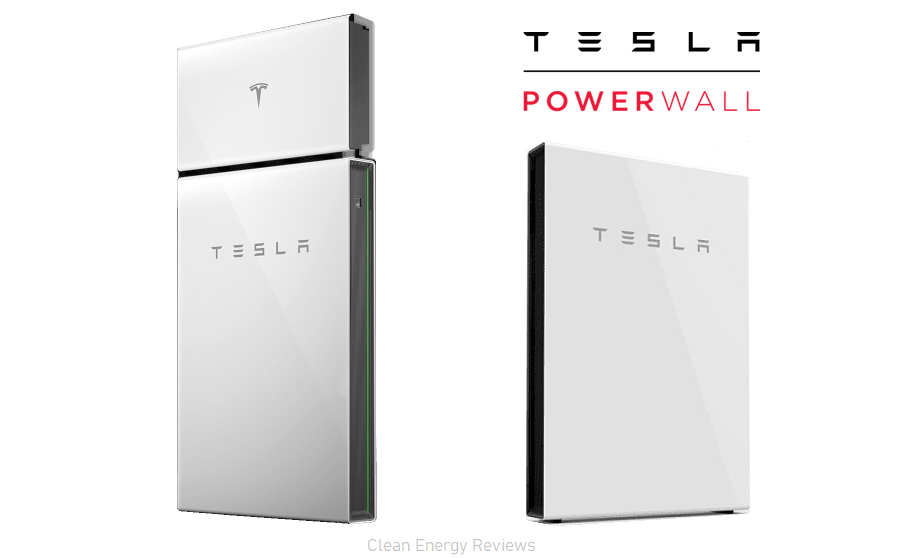



















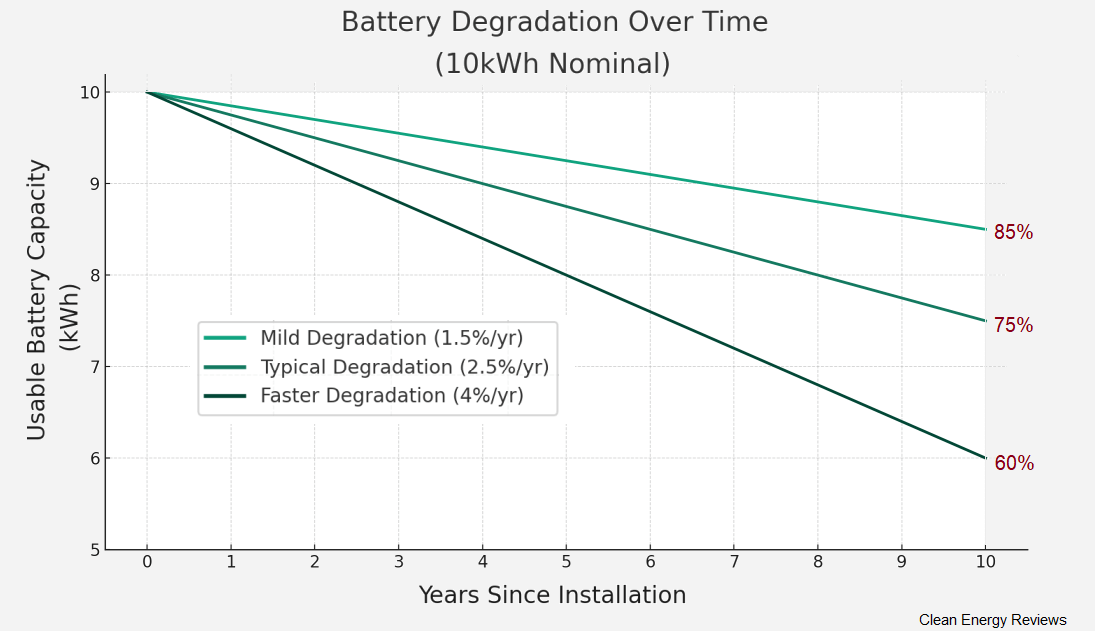
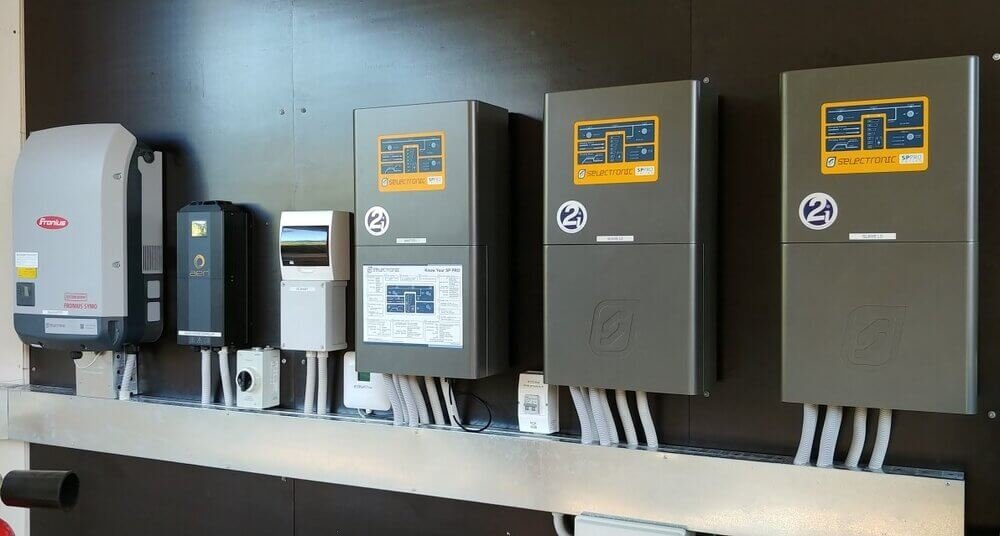
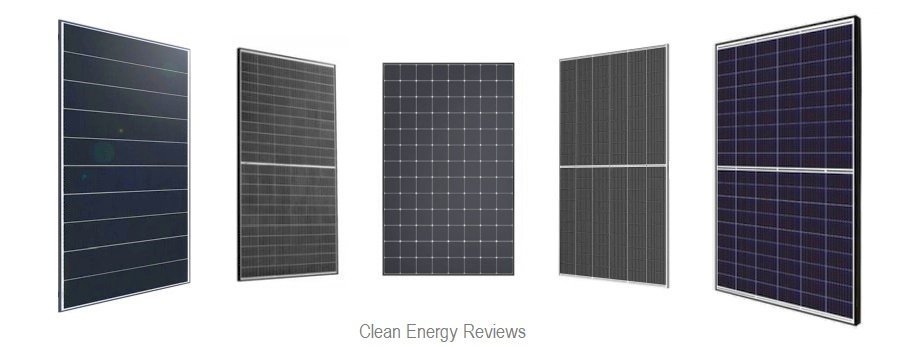




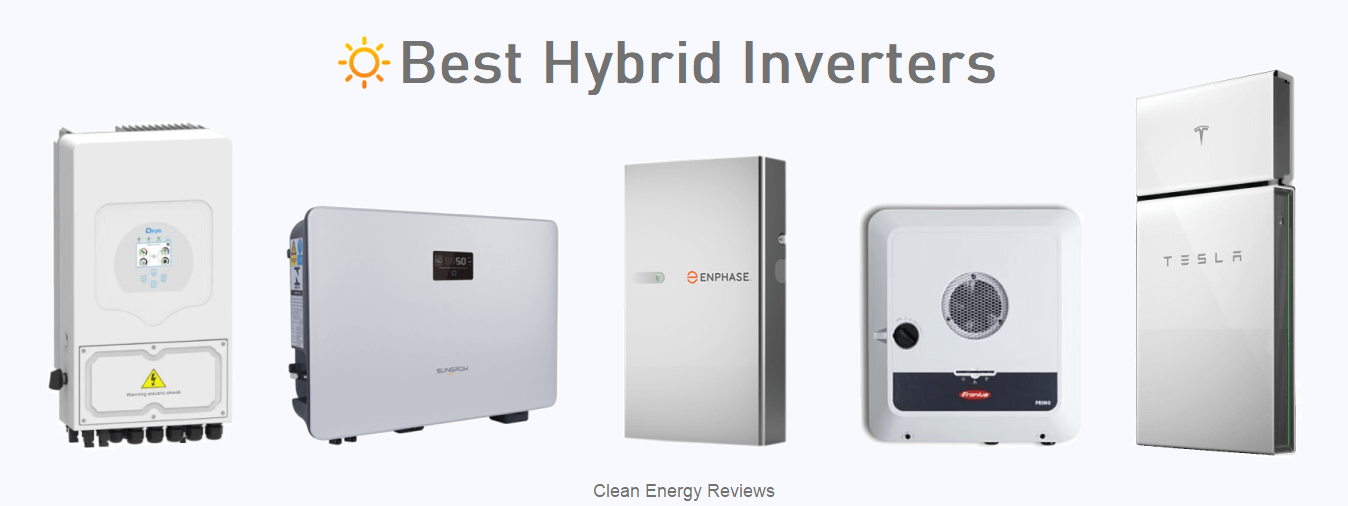
The comprehensive guide to solar battery and off-grid systems. How to select and size a home solar battery system and how much it may cost you. Also, alternatives to adding batteries and how energy efficiency can save you more than adding a battery.